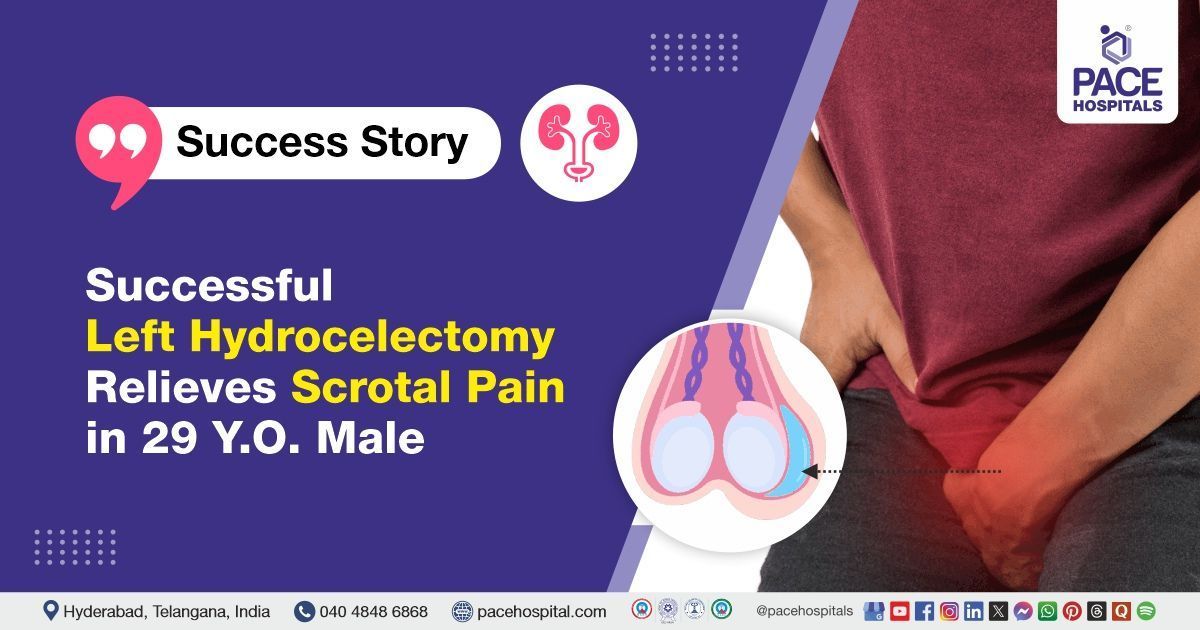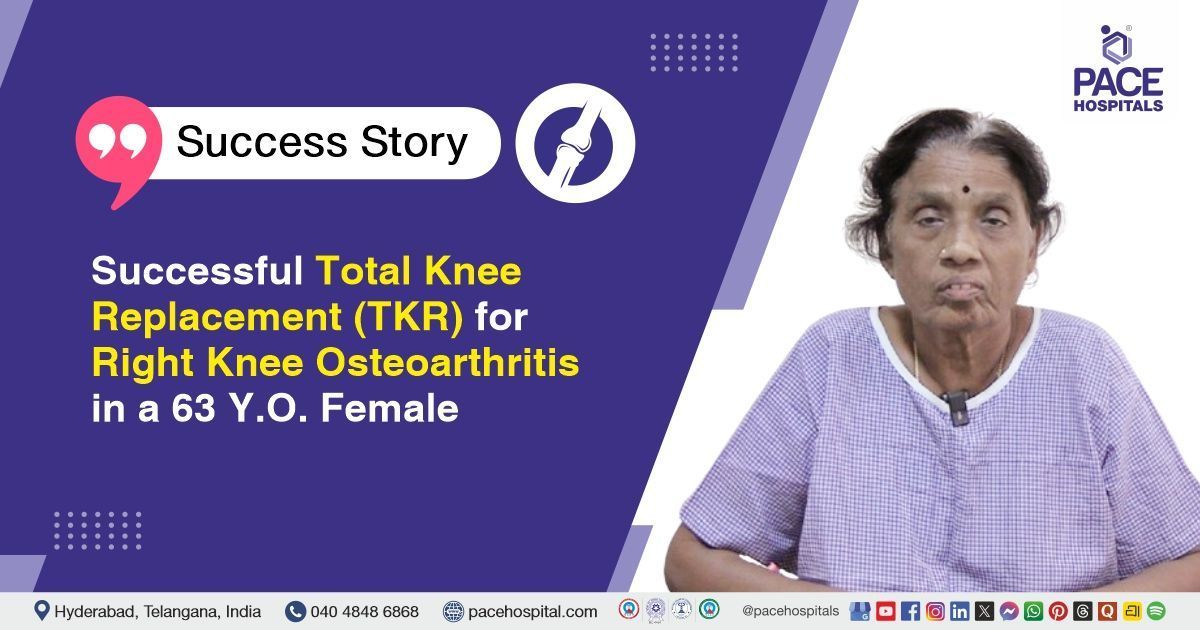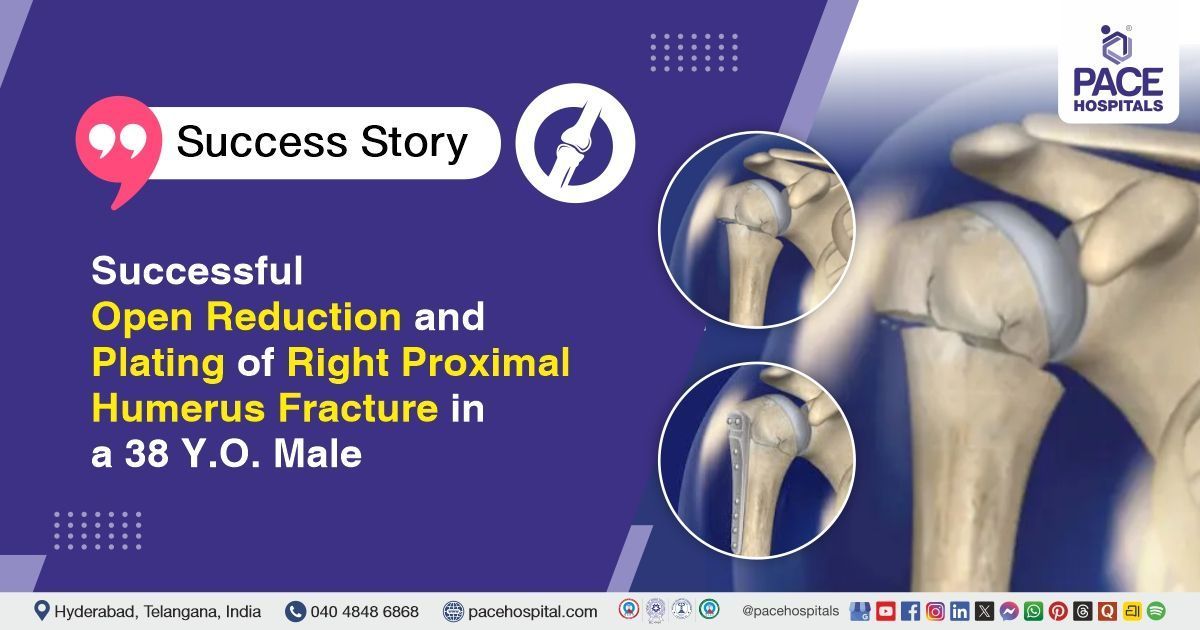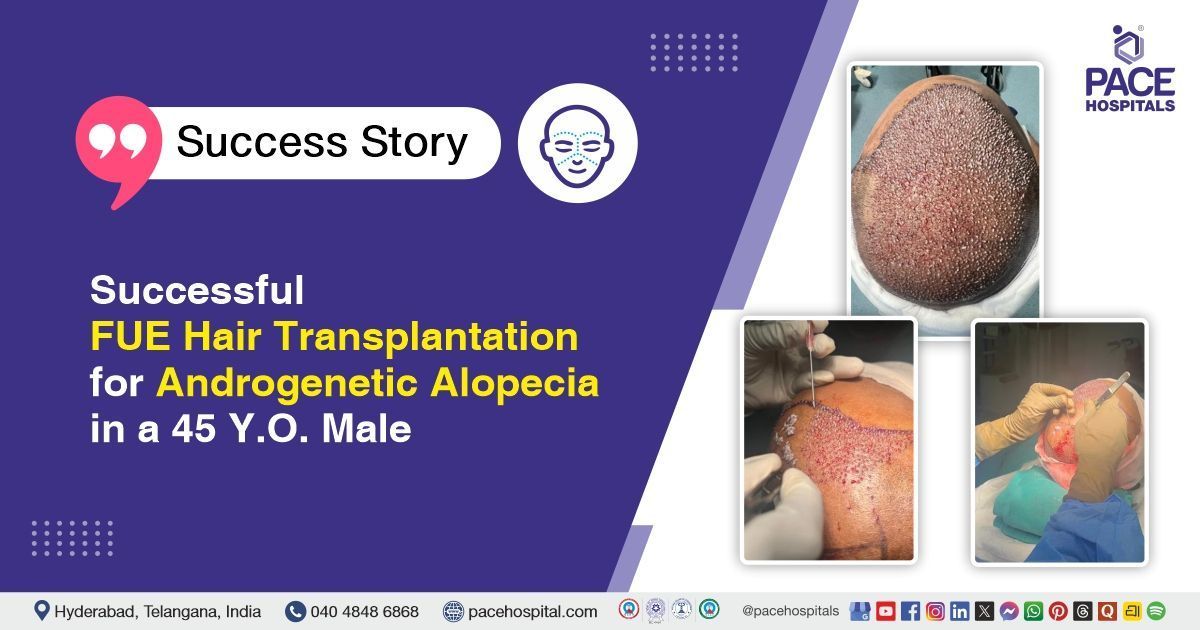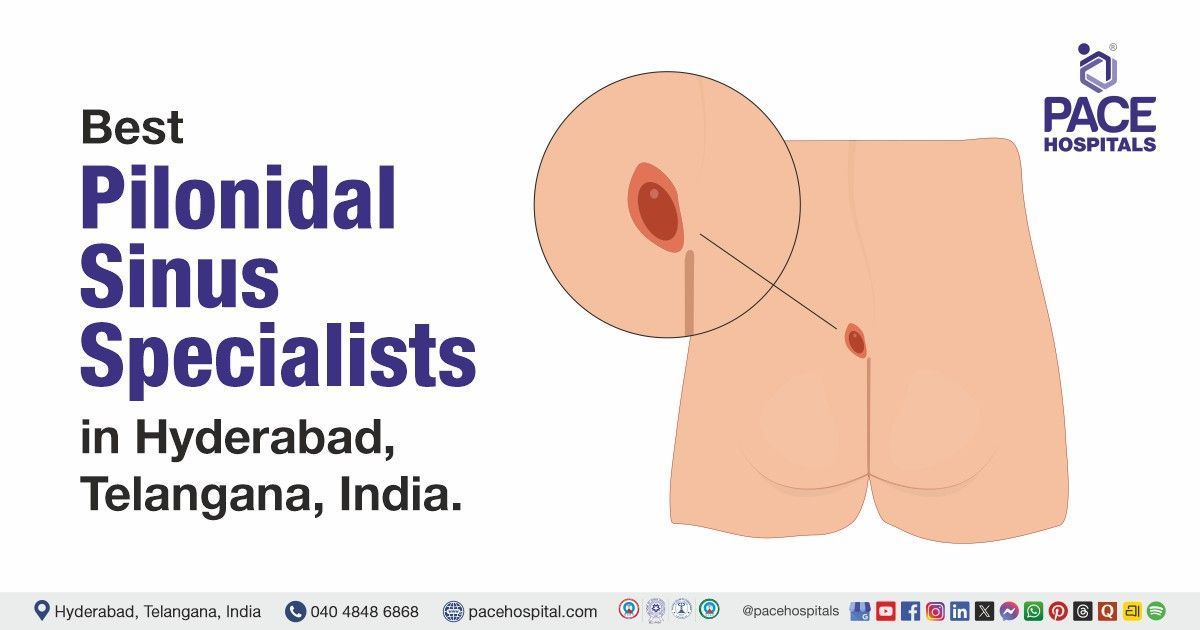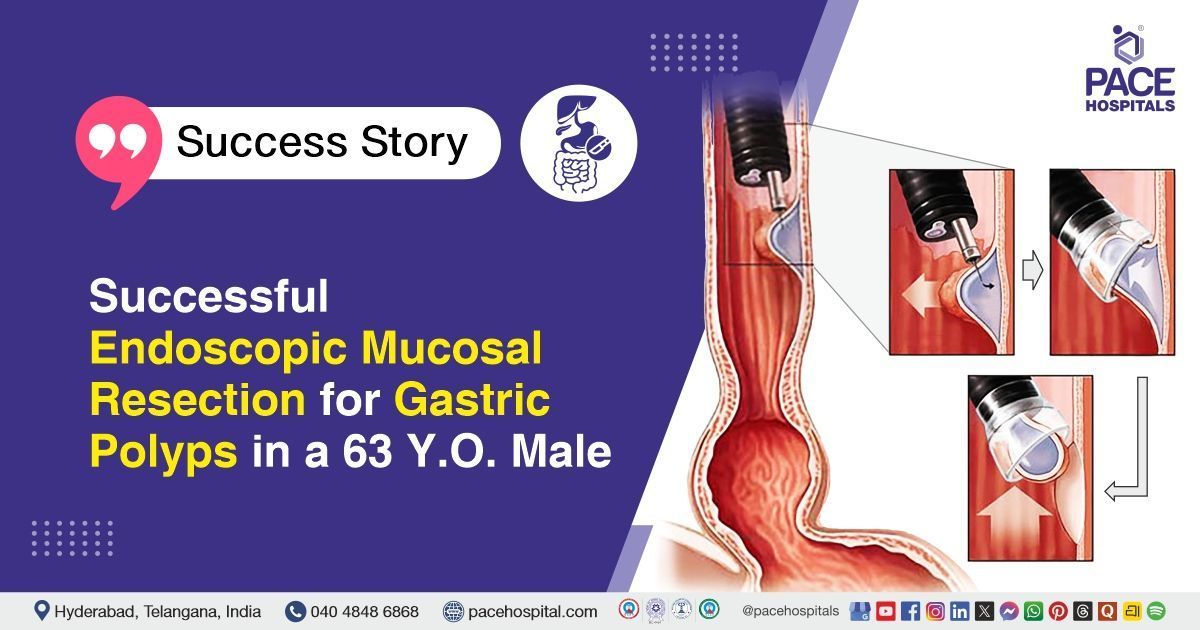Successful Left Hydrocelectomy Relieves Scrotal Pain in 29-Year-Old Male
PACE Hospitals
The PACE Hospital's expert Urology team successfully performed a
left hydrocelectomy on a 29-year-old male patient who presented with left scrotal pain. The procedure was carried out with the aim of relieving discomfort and addressing the underlying hydrocele to prevent further complications.
Chief Complaints
A 29-year-old male patient with a
body mass index (BMI) of
22
presented to the
Urology Department at
PACE Hospitals, Hitech City, Hyderabad, with complaints of left scrotal pain. A comprehensive evaluation was undertaken to identify the underlying cause of his symptoms.
Past Medical History
The patient had no known history of hypertension or diabetes. The absence of comorbid conditions was considered clinically favourable, as it had minimized the risk of intraoperative and postoperative complications and had supported a smoother, more stable recovery in this case.
On Examination
On examination, the patient was conscious, oriented, and afebrile. Vital signs were within normal limits. Abdominal examination revealed a soft, non-tender abdomen with no organomegaly and normal bowel sounds. Local examination of the scrotum showed an enlarged left hemiscrotum with mild tenderness. Fluctuation and transillumination tests were positive, consistent with a diagnosis of hydrocele.
The overlying skin was normal, with no erythema, ulceration, or induration. The right hemiscrotum was normal in size and consistency. Cardiovascular examination revealed normal heart sounds with no murmurs. Respiratory examination showed bilateral air entry with no added sounds. Central nervous system and musculoskeletal system examinations were within normal limits.
Diagnosis
Upon admission to PACE Hospitals, the patient was thoroughly evaluated by the Urology team, including a detailed review of his medical history and a comprehensive clinical examination. Presented with left scrotal pain, there was clinical suspicion of a scrotal pathology such as hydrocele or other fluid collection.
The patient underwent diagnostic investigations, including a scrotal ultrasound, which confirmed the presence of a left-sided hydrocele with normal testes and epididymides, and no evidence of varicocele. Laboratory investigations, including complete blood picture, renal function tests, blood sugar, coagulation profile, serum electrolytes, and viral screening for HIV, Hepatitis B, and C, were all within normal limits. Chest X-ray and ECG showed no abnormalities.
Based on the confirmed findings, the patient was advised to undergo Left-sided Hydrocele Treatment in Hyderabad, India, under the expert care of the Urology Department.
Medical Decision Making
After a detailed consultation with Dr. Abhik Debnath, Consultant Laparoscopic Urologist, a comprehensive evaluation was conducted focusing on the patient’s presentation of left scrotal pain and the diagnostic findings. Clinical and diagnostic findings confirmed the presence of a left-sided hydrocele with no evidence of testicular pathology or infection.
It was determined that left hydrocelectomy was identified as the most appropriate intervention to alleviate the patient's symptoms and to prevent progression or complications.
The patient and his family were informed about the diagnosis of left-sided hydrocele, the planned left hydrocelectomy, the associated risks, and the expected benefits aimed at relieving symptoms and preventing further complications.
Surgical Procedure
Following the decision, the patient was scheduled for Left Hydrocelectomy Surgery in Hyderabad at PACE Hospitals, under the expert care of the urology department.
The procedure involved the following steps:
Anesthesia and Preparation: The patient was positioned supine, and spinal anesthesia was administered to provide adequate pain relief during the procedure. The left scrotal area was cleaned and draped under sterile conditions.
Incision and Exposure: A transverse or vertical incision was made over the affected side of the scrotum to expose the hydrocele sac. Careful dissection was performed through the skin and subcutaneous tissue to reach the tunica vaginalis, which encloses the hydrocele.
Hydrocele Sac Management: The hydrocele sac, containing clear fluid, was identified and carefully opened. The fluid was drained, and the sac was inspected. The sac was then everted (turned inside out) using the Jaboulay technique, and excess sac tissue was excised.
Hemostasis and Drain Placement: Adequate hemostasis was ensured to prevent postoperative bleeding. A corrugated rubber drain was placed in the scrotal sac to allow drainage of any residual fluid or blood.
Closure: The testis was repositioned normally within the scrotum. The incision was closed in layers with absorbable sutures for the deeper tissues and non-absorbable or absorbable sutures for the skin. A sterile dressing was applied, and scrotal support was provided.
Postoperative Care
After surgery, the patient was closely monitored to ensure stability. His intraoperative and postoperative course was uneventful, with no complications observed. He received necessary medications for pain management and infection prevention during his hospital stay. The surgical drain was removed. The patient was discharged in stable condition.
Discharge Medications
At the time of discharge, the patient was prescribed a combination of medications. This included a broad-spectrum oral antibiotic to prevent surgical site infection, a combination analgesic and antipyretic for pain and inflammation management, and anti-inflammatory enzyme preparation to reduce postoperative swelling and support tissue healing. Additionally, a proton pump inhibitor was prescribed to protect the gastrointestinal lining from irritation, and a multivitamin and mineral supplement was included to promote overall recovery and enhance immune function.
Advice on Discharge
The patient was advised to use scrotal support to minimize discomfort and promote healing. Proper scrotal and perineal hygiene was emphasized to reduce the risk of infection. The patient was instructed to avoid contact sports, heavy weightlifting, and two-wheeler travel for a duration of one month. A normal diet was recommended.
Emergency Care
The patient was instructed to contact the emergency ward at PACE Hospitals in the event of an emergency or if symptoms such as fever, abdominal pain, bleeding, or vomiting develop.
Review and Follow-up Notes
The patient was advised to return for a follow-up visit with the Urologist in Hyderabad at PACE Hospitals after 4 days for dressing and drain removal.
Conclusion
This case highlights the successful diagnosis and surgical management of a left-sided hydrocele in a young male patient presenting with scrotal pain. Timely clinical evaluation and imaging confirmed the condition, leading to a definitive surgical intervention. The patient had an uneventful recovery and was discharged in stable condition with appropriate postoperative care instructions.
Holistic Management of Hydrocele for Optimal Patient Outcomes
This case exemplifies how addressing common conditions like hydrocele requires more than just surgical correction; it demands a holistic approach encompassing accurate diagnosis, patient education, and tailored postoperative care. The urologist/urology doctor plays a crucial role in recognising the patient’s symptoms early and ruling out associated conditions to ensure targeted treatment.
Clear communication about lifestyle modifications and hygiene fosters better recovery, while the integration of minimally invasive surgical techniques with vigilant follow-up underscores evolving standards in urology that prioritise patient comfort and long-term well-being. Such comprehensive care transforms a routine procedure into a meaningful step toward restoring a patient's quality of life.
Share on
Request an appointment
Fill in the appointment form or call us instantly to book a confirmed appointment with our super specialist at 04048486868

